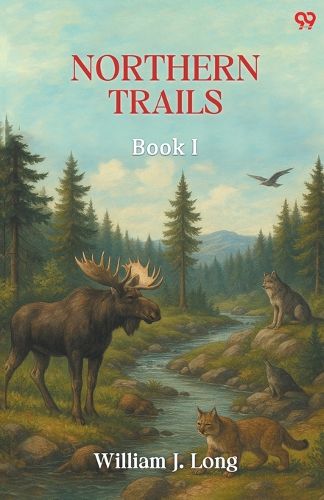Readings Newsletter
Become a Readings Member to make your shopping experience even easier.
Sign in or sign up for free!
You’re not far away from qualifying for FREE standard shipping within Australia
You’ve qualified for FREE standard shipping within Australia
The cart is loading…






Northern trails Book I explores the rhythms of wilderness life through detailed observations of animals, with a particular focus on wolves. Blending narrative and naturalist insight, the author defends the authenticity of his findings, challenging skepticism with personal experience and the support of other observers. The work opens with reflections on the value of careful study and the need to understand animals through direct interaction with their environment. Central to the narrative is the white wolf, depicted not as a symbol or myth but as a living creature within a specific ecological context. Through shifting perspectives, including those of young observers and the animals themselves, the book conveys a deep sense of interconnectedness between species and habitat. Rather than romanticizing the wild, it presents nature as both mysterious and knowable, where patience and attention yield understanding. The tone is both descriptive and meditative, aiming to cultivate a sense of respect and curiosity for the unseen patterns of animal life. The narrative evokes a world where observation leads to empathy and where the wilderness offers its own kind of knowledge.
$9.00 standard shipping within Australia
FREE standard shipping within Australia for orders over $100.00
Express & International shipping calculated at checkout
Northern trails Book I explores the rhythms of wilderness life through detailed observations of animals, with a particular focus on wolves. Blending narrative and naturalist insight, the author defends the authenticity of his findings, challenging skepticism with personal experience and the support of other observers. The work opens with reflections on the value of careful study and the need to understand animals through direct interaction with their environment. Central to the narrative is the white wolf, depicted not as a symbol or myth but as a living creature within a specific ecological context. Through shifting perspectives, including those of young observers and the animals themselves, the book conveys a deep sense of interconnectedness between species and habitat. Rather than romanticizing the wild, it presents nature as both mysterious and knowable, where patience and attention yield understanding. The tone is both descriptive and meditative, aiming to cultivate a sense of respect and curiosity for the unseen patterns of animal life. The narrative evokes a world where observation leads to empathy and where the wilderness offers its own kind of knowledge.